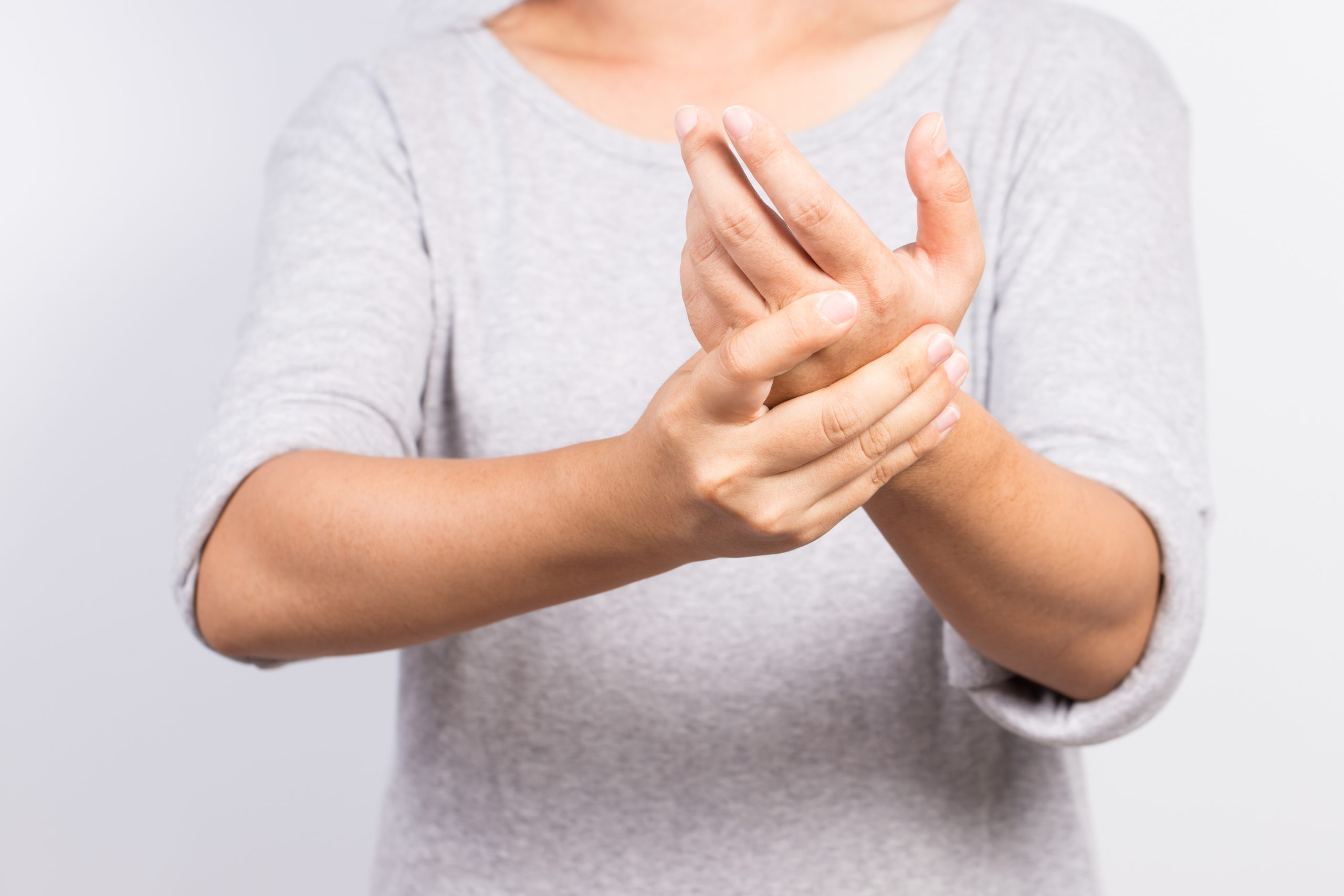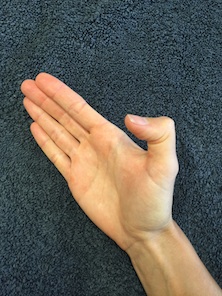
 What is it?
What is it?
Basal Thumb Strain – also known as CMC osteoarthritis – is a condition that develops gradually over time. Pain at the base of the thumb is particularly common in post-menopausal women in the fifth to seventh decades of life. It is frequently located either at the palmar surface of the trapeziometa-carpal joint, or more dorsally, between the base of the first and second metacarpals.
Symptoms of basal thumb strain
The most common symptom of a basal thumb strain is a deep, aching pain at the base of the thumb. The pain is most often aggravated by opening jars, writing, turning taps and sustained grip activities. In cases of more advanced arthritis, it can also result in a constant dull aching pain. In severe cases, mal-alignment of the joint occurs causes a “bump” to appear at the base of the thumb.
Treatment from your hand therapist
If you are suffering from pain at the base of the thumb you will be provided education regarding the disease by your hand therapist, including the diagnosis, likely prognosis, specific objectives of treatment, self-management approaches and instruction in joint protection techniques.
It is essential that you become aware of the activities that aggravate the symptoms in order to understand the need to change the task performance by either using a different posture or technique, assistive devices or splints. By so doing you can take some responsibility in alleviating the symptoms and help with rehabilitation.
 Simple strategies include advice to:
Simple strategies include advice to:
• Use the strongest joint for the task
• Use two hands to hold a book or a stack of plates to distribute the load
• Avoid prolonged static positions, such as holding a smart phone while texting with the other hand
• Alternate repetitive activities with rest breaks
Various assistive devices are available that assist with performing hand movements without aggravating the symptoms. They include jar openers, tap turners, large handled cutlery, large key holders, and wide grip vegetable peelers.
By identifying aggravating activities you will be able to identify which of these assistive devices could be useful in day-to-day life.
There are various splinting options that can assist with pain at the base of the thumb too. 
Clinical examinations
An X-Ray may be helpful to determine the degree of degenerative change, although symptoms don’t necessarily correlate with severity of X-ray change.
Surgical treatment
More chronic cases of the condition may require surgery. Your therapist can discuss with you and your GP and arrange a referral to a surgeon if required.
If you are suffering from any of these symptoms, or any other issues with the hand, arm or fingers, please feel free to get in touch with the Hand Therapy Group here, we’d be more than happy to help.


